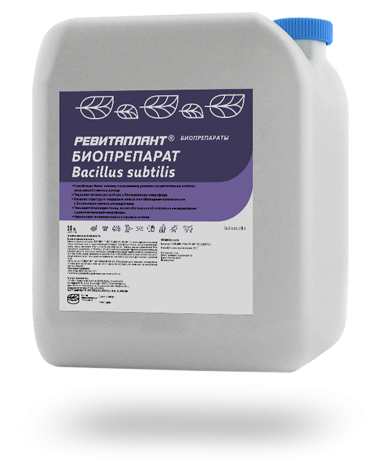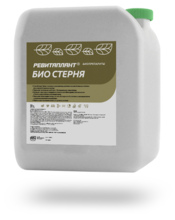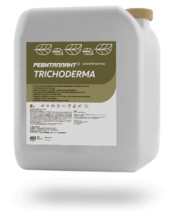Ingredients
| Biological components: Bacillus subtilis | |||||||||||||
Goals / Purpose
| Crop | Input rate | Input stage | Remarks | |
|---|---|---|---|---|
| Crop: | Input rate: 1–2 l/ha | Input stage: Soil spraying after harvesting. Inhibiting phytopathogens / Plant spraying during vegetation for disease prevention | Remarks: | Details |
| Crop: | Input rate: 1–2 l/ha | Input stage: Soil spraying after harvesting. Inhibiting phytopathogens / Plant spraying during vegetation for disease prevention | Remarks: | Details |
| Crop: | Input rate: 1–2 l/ha | Input stage: Soil spraying after harvesting. Inhibiting phytopathogens / Plant spraying during vegetation for disease prevention | Remarks: | Details |
| Crop: | Input rate: 1–2 l/ha | Input stage: Soil spraying after harvesting. Inhibiting phytopathogens / Plant spraying during vegetation for disease prevention | Remarks: | Details |
| Crop: | Input rate: 1–2 l/ha | Input stage: Soil spraying after harvesting. Inhibiting phytopathogens / Plant spraying during vegetation for disease prevention | Remarks: | Details |
Description
As far as is known the saturation of the soil with a variety of elements and the presence of bacteria in it are dependent phenomena. So, if there are few bacteria, then the growth of plants, even if there is a sufficient amount of various elements, will slow down and the plants will not develop properly. To eliminate the deficiency of bacteria, foliar dressings with special formulations called bacterial, are used.
Bacillus subtilis is a bacterial fungicide. The main active ingredient is the Bacillus subtilis bacteria, CFU 2.5 * 109. These are living vegetative cells and spores and a culture fluid that inhibits the growth of phytopathogenic microorganisms, inhibiting propagation of many fungal and bacterial plant diseases.
Bacillus subtilis performance consists in its ability to generate antibiotics and immune factors that dissolve cell walls of disease agents and in parallel boost plant immunity.
Getting onto a plant Bacillus subtilis are able to spread throughout the vascular system of the plant and normalize biochemical processes by their excreta, thus inhibiting propagation of many fungal and bacterial plant disease agents and making plant nutrition better and more efficient.
The formula features not only the remedial effect but also a preventive one against the following blight lot:
- powdery mildew
- rhizoctonia
- alternariosis
- phomose
- mucosal bacteriosis
- tracheomycotic wilt-peronosporosis
- black bacterial spotting
- cercosporosis
- rotting rot (Fusarium rot, black mold rot, green mold rot)
- storage rot (white rot, gray rot, black dry rot, phomosis, monilial rot)
- dry and wet rot,
- snow mold,
- scab, rust
- pink mold
- late blight
Advantages of Bacillus subtilis treatment:
- high biological, antipathogenic, bactericidal activity against fungal and bacterial diseases
- high growth-regulating activity
- compatible with chemical pesticides
- reduces the toxic effect of chemical fungicides and herbicides on crop plants
- increases crop yield
- increases product storable life by 2–3 times in case of a before-storage treatment
- does not cause resistance in plants.
- does not require a waiting period
- environmentally friendly, harmless for humans, animals, birds, insects
- can be used throughout the vegetation period of plants.
Application:
Bacillus subtiLis is used for treatment of pre-sowing seeds, planting material and vegetating plant spraying


